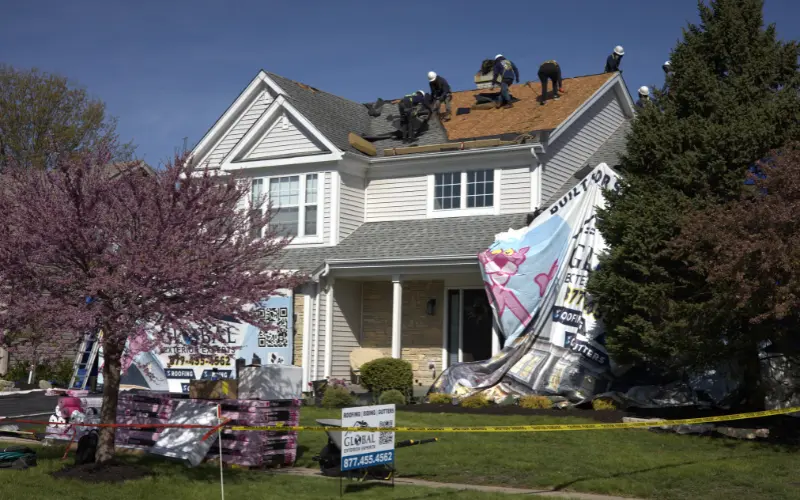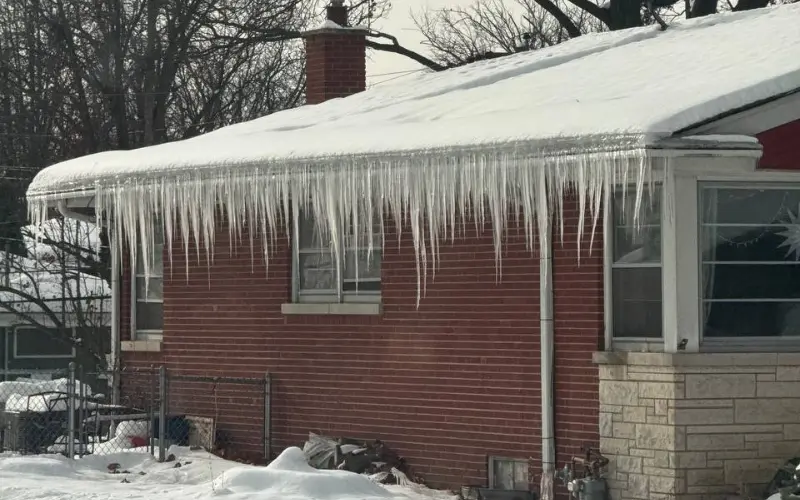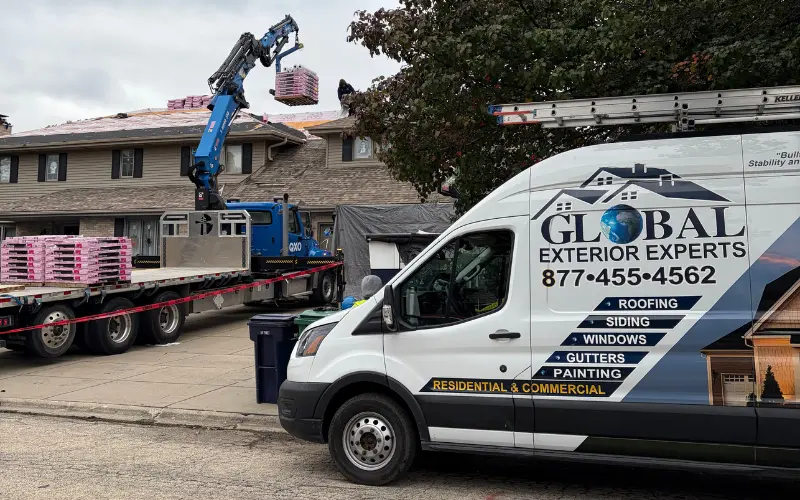Not sure if you need roof replacement? Look for curling shingles, missing granules, water stains in your attic, or a roof over 20 years old. Interior leaks, sagging sections, and rising energy bills signal there may be some serious problems. Most roofs last 20 to 30 years depending on materials and weather exposure. Catching damage early saves money and prevents structural issues that cost thousands more to repair.
Your Shingles Tell When It's Time To Replace The Roof
Here's the thing: shingles are your first line of defense, and they show wear before anything else does. Walk outside and just look up. Are the edges curling like potato chips? Are the center tabs cupped inward? Either pattern means the shingles have lost their waterproofing ability. When the temperature swings from below zero in January to 95 degrees in July cause constant expansion and contraction that breaks down asphalt over time.
Cracked shingles are another red flag. One or two cracks might happen from a fallen branch, but widespread cracking means the material has become brittle from UV exposure and temperature cycles. You'll see these cracks running horizontally or vertically across multiple shingles.
Missing shingles are an obvious sign too so make sure you check after every major storm. Wind doesn't just blow shingles off randomly. It targets the weakest spots where the adhesive has failed or the material has degraded so if you're losing shingles in moderate winds, the whole roof is probably compromised.
Look at the color consistency too. Shingles that have faded to different shades or developed dark streaks aren't just ugly (though they tank your curb appeal). Discoloration often signals algae growth or granule loss underneath and both of which accelerate deterioration.
The Granule Problem You Can't Ignore
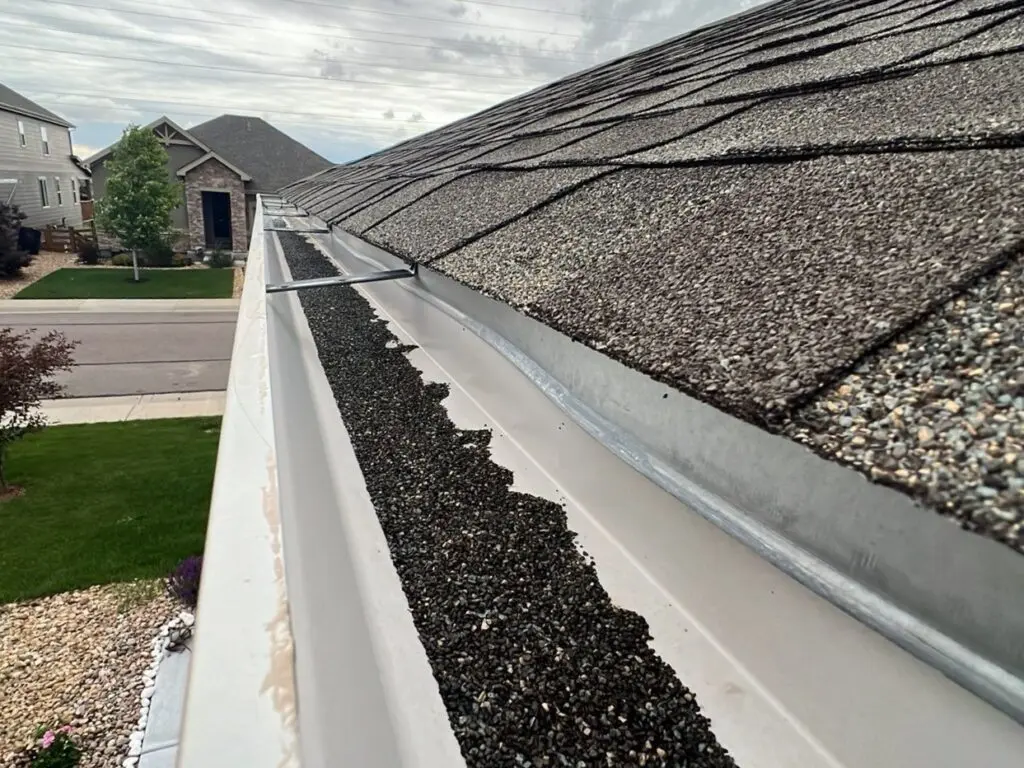
Also check your gutters after the next rain. See what looks like coarse sand or grit collecting at the downspout? Those are asphalt shingle granules, and they're supposed to stay on your roof.
Granules protect shingles from UV damage and fire. When they wash away, you're left with exposed asphalt that bakes in the sun and degrades fast. A new roof sheds some granules in the first year or two. That's normal. What's not normal is finding granule buildup years later or noticing bald patches on your shingles from ground level.
Bald spots create weak points where water penetrates easier. Ice dams form in those spots during winter, and that freeze-thaw cycle breaks down the shingle even faster. You end up in a deterioration spiral that speeds up every season. Ice dams, common here due to heavy snow and temperature fluctuations, make this problem significantly worse by forcing water under shingles where it refreezes and expands.
Most homeowners don't think about granules until a roofing company points them out during an inspection. Don't wait that long. A quick gutter check twice a year tells you plenty about roof health.
Water Stains Mean You're Already Behind
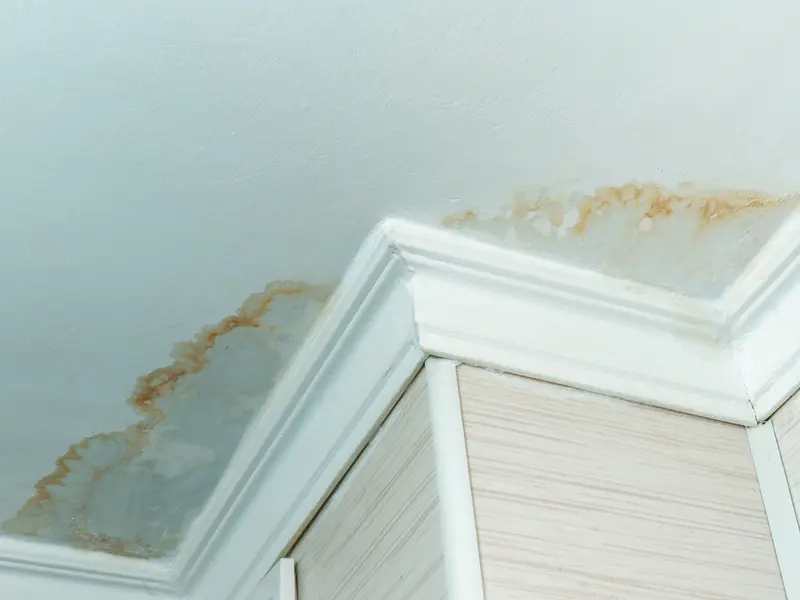
Alright, let's talk about the scary stuff. Water stains on your ceiling or running down interior walls mean water has already breached your roof, traveled through insulation and framing, and found its way inside. By the time you see a stain, the damage is worse than it looks.
We recommend you head up to your attic with a flashlight. Look at the underside of your roof deck for dark streaks, water stains, or actively wet spots. Check the insulation too. If it's compressed, discolored, or damp, you've got ongoing moisture coming into your home.
Water damage doesn't stay contained. It spreads to wood framing creating rot that weakens structural supports and not to mention mold follows moisture too. Once mold establishes itself in your attic or walls, you're looking at remediation costs on top of roof replacement.
Some leaks are intermittent. They only show up during wind-driven rain or when ice dams form, but that doesn't make them less serious. A leak that happens twice a year still causes cumulative damage that compounds over time.
If you see daylight through your roof boards from inside the attic, that's an emergency. Light means gaps, and gaps mean water can pour straight in during the next storm.
Age Of The Roof Shouldn't Be Ignored
Of course, a roof's age matters as much as visible damage. Standard asphalt shingle roofs in this climate typically last 15 to 20 years. That's shorter than what you'll see advertised because manufacturers base their numbers on ideal conditions. Our reality includes brutal winter cold, summer heat, constant temperature swings, and not to leave out the ice dams that accelerate wear.
Architectural shingles buy you a few more years and can usually last 20 to 25 years if properly maintained. The extra thickness and weight help them resist wind damage and handle freeze-thaw cycles better than basic three-tab shingles.
Metal roofs go longer and can often go 40 to 50 years depending on the coating and gauge. The temperature swings here cause expansion and contraction, so proper installation with appropriate fasteners becomes critical. Tile and slate can last 50 to 100 years, but they're heavy and need structural reinforcement to handle snow loads.
How do you know how old your roof is? Check your property records. Previous owners might have disclosed the installation date. If not, ask neighbors in similar homes when they last replaced their roofs. Usually subdivisions built around the same time often need roof replacement on similar schedules.
A 15-year-old roof showing minor wear might buy you another few years with maintenance but an 18-year-old roof with curling shingles and granule loss needs replacement now, not later. Age + visible damage = urgency.
Manufacturers' warranties give you a clue too. Most asphalt shingle warranties run 20 to 30 years, but the prorated coverage drops significantly after year 10. That warranty structure exists because manufacturers know when failures typically occur.
Sagging Sections Signal Structural Trouble
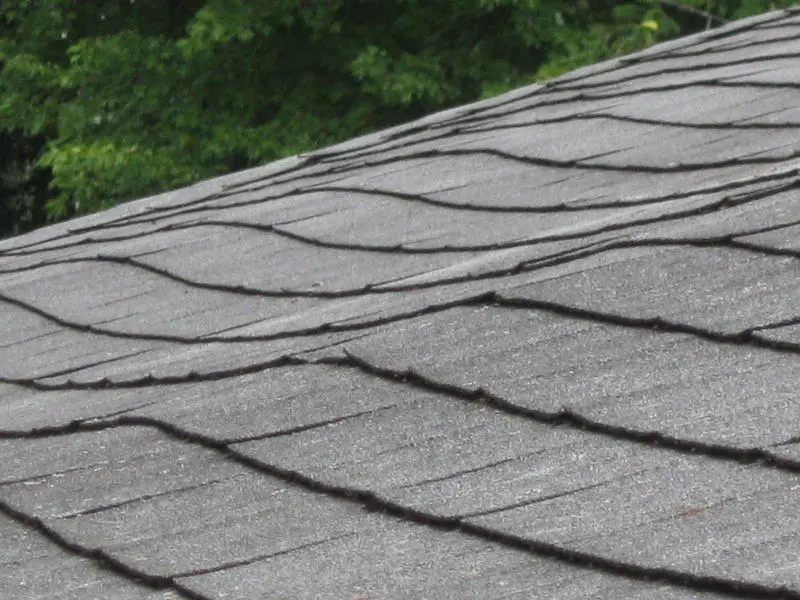
Step back from your house and look at the roofline. It should be straight and level, if you see any dips, waves, or sagging sections, you've got a structural problem that goes beyond shingles.
Sagging means the roof deck or the supports underneath have failed. This happens from prolonged water exposure that rots the plywood sheathing or damages rafters and trusses. Sometimes it's a design flaw or undersized framing that couldn't handle the load, but usually it's moisture damage.
A sagging roof needs attention immediately. The structure could fail at any point especially under snow load or during high winds. This isn't a "wait and see" situation., get a professional inspection within days, not weeks.
Repairing a sag involves more than just roof replacement. You'll need structural work to replace damaged framing which adds cost and complexity. Also permits have to get involved at this stage and inspections become mandatory.
Your Energy Bills Don't Lie
Here's something most property owners miss: rising heating and cooling costs can point straight to roof problems. A failing roof creates air leaks that let conditioned air escape and outside air infiltrate your home.
In a climate where you're running heat six months and air conditioning the other six those leaks can add up fast. Your HVAC system runs longer to maintain temperature during single-digit winter nights and 90-degree summer days, and your utility bills climb month after month.
This happens when roof ventilation fails or when gaps develop around roof penetrations like vents, chimneys, and skylights. Proper roof ventilation matters more than most people realize. Without adequate intake and exhaust, your attic overheats in summer (cooking your shingles from underneath) and traps moisture in winter (causing condensation and rot). Both scenarios shorten roof life and drive up energy costs.
If your energy bills have increased 15 to 20 percent without explanation, check your roof and attic insulation. The fix might involve roof replacement, better ventilation, or both.
Flashing Failures Let Water In
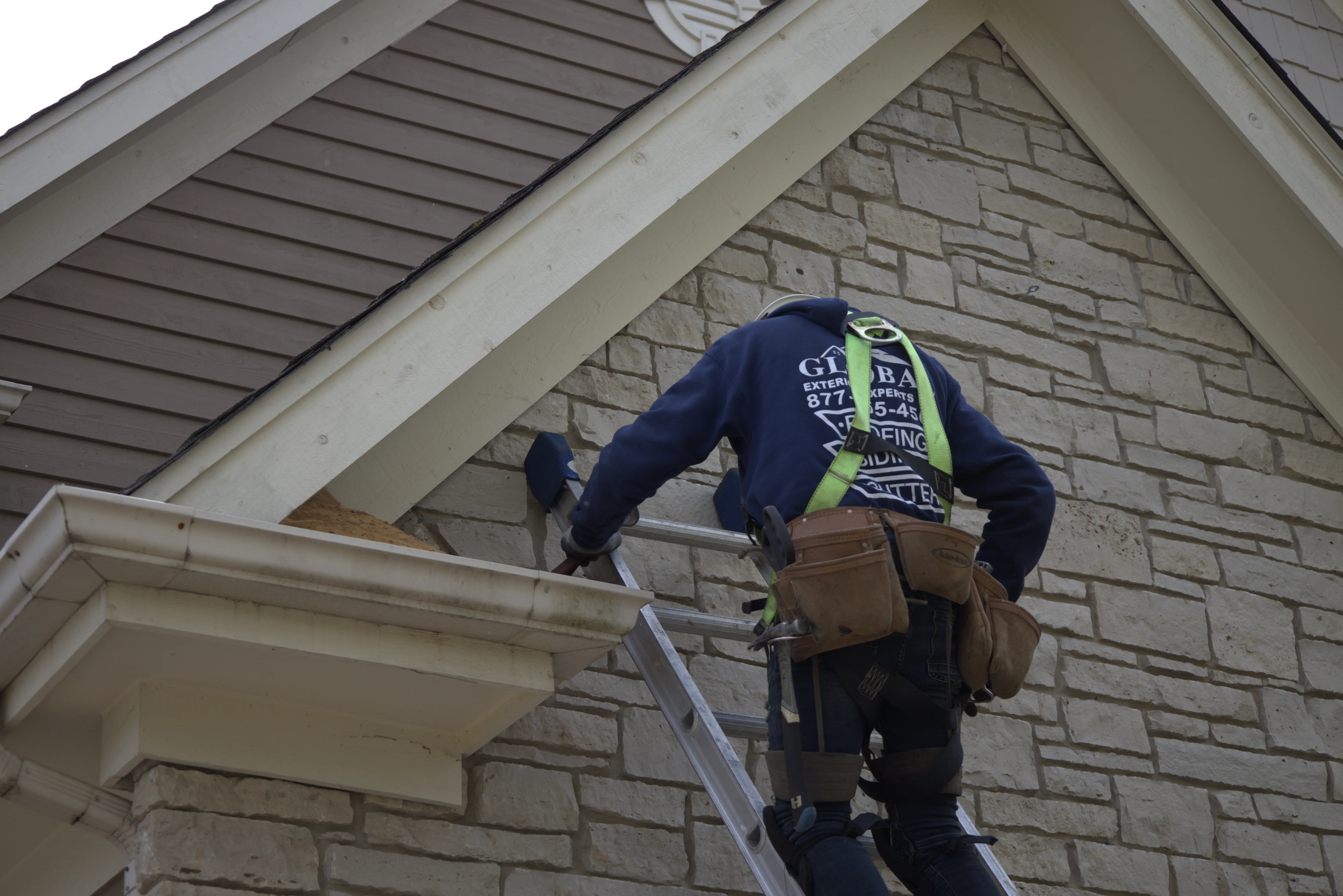
Flashing is the metal or rubberized material that seals joints where your roof meets walls, chimneys, vents, and valleys. It's the unsung hero that prevents water from sneaking into those vulnerable transition points.
Flashing deteriorates over time. Metal flashing rusts or corrodes. Rubber boots around vent pipes crack and split. Caulked seams dry out and separate. Once flashing fails, water finds its way under shingles and into your home through paths you can't see.
Look for rust stains, separated seams, or lifted edges around chimneys and wall intersections. Check vent pipe boots for cracks in the rubber. Valley flashing should lie flat and show no gaps or missing sections.
Sometimes flashing can be repaired or replaced without a full roof replacement, but if your roof is old and showing other signs of failure, fixing flashing is just delaying the inevitable. Better to address everything at once than pay for two separate projects.
Moss and Algae Aren't Harmless

Dark streaks or green patches on your roof might look like cosmetic issues, but they're not. Algae creates those black streaks you see on north-facing or shaded roof sections. Moss grows in moist areas where sunlight doesn't reach, particularly common here given our humid summers.
Algae feeds on the limestone filler in shingles. It doesn't cause immediate damage, but it does accelerate granule loss and makes shingles more vulnerable to other forms of deterioration.
Moss is worse. It holds moisture against the shingle surface, creating an environment for rot. Moss roots can lift shingle edges, letting water underneath. With our freeze-thaw cycles, trapped moisture expands and contracts repeatedly, breaking down shingles faster than normal weathering. What starts as a cosmetic issue becomes structural damage within a couple of seasons.
Never pressure wash moss or algae off your roof. The force damages shingles and shortens whatever is left of their life. Gentle brushing works better but if growth returns quickly, the underlying conditions (shade, moisture, failing shingles) haven't changed.
Some newer shingles include algae-resistant granules and if you're replacing your roof and have mature trees creating shade or moisture-prone areas, these products add a few extra years of protection.
What Roof Replacement Actually Costs
Let's get practical. Roof replacement costs vary widely based on size, pitch, material choice, and location, but here are realistic ranges for a typical 2,000-square-foot home:
- Asphalt shingles: $8,000 to $16,000 for basic three-tab shingles, $12,000 to $22,000 for architectural shingles
- Metal roofing: $15,000 to $35,000 depending on panel type and finish
- Tile or slate: $25,000 to $50,000 or more due to material cost and specialized installation
Steeper roofs tend to cost more because they're harder and more dangerous to work on, multiple stories add complexity, and removing old layers before installing new materials adds disposal fees and labor time.
Permits typically run $250 to $500 depending on your municipality. Some jurisdictions require engineering inspections for older homes or specific roof types, adding another $500 to $1,500. Then there's the inevitable surprise: rotten decking that needs replacement once the old shingles come off. Budget an extra 10 to 15 percent for unforeseen repairs.
Material shortages can delay projects by weeks or months and supply chain disruptions, seasonal demand spikes, or manufacturer backorders all create scheduling headaches. Order early and confirm lead times before signing contracts.
Timeline and What to Expect
.webp)
A straightforward roof replacement on an average-sized home takes three to five days in good weather. Complex roofs with multiple valleys, dormers, or specialty materials might take a week or longer.
Weather dictates the schedule more than anything because rain stops work immediately. Temperatures below 40 degrees make shingle installation risky because asphalt becomes brittle and tends to crack when nails are driven through. Some manufacturers won't even warranty shingles installed in cold conditions. Extreme summer heat (above 85 degrees) slows work and makes adhesive strips activate too quickly which also creates installation challenges.
Here's what happens:
- Material delivery arrives one to two days before work starts (those bundles are heavy, and they'll sit in your driveway).
- Tear-off begins early on day one. It's loud. Your whole house vibrates. Debris goes into a dumpster or dump trailer.
- Decking inspection and repairs happen next. Any rotten plywood gets replaced.
- Underlayment, drip edge, and flashing go down before shingles.
- Shingle installation works from bottom to top.
- Final cleanup includes magnet sweeps for stray nails.
You'll need to move vehicles out of the driveway. Plan for noise disruption if you work from home. Protect valuable items in your attic from dust and vibration. Some contractors offer relocation assistance, but don't count on it.
Planning Your Roof Replacement
Timing matters. Most roofing companies stay busiest in late summer and early fall when weather cooperates and property owners finally address damage from spring storms. Booking during these peak months means longer waits and potentially higher prices.
Late spring and early summer offer the best window. Temperatures are consistently above 40 degrees (critical for proper shingle installation), and you avoid the summer heat that makes roofs dangerously hot to work on. Weather is more stable than early spring when rain delays are common.
Fall works if you schedule early, but availability shrinks fast as everyone tries to finish projects before winter. Once temperatures consistently drop into the 30s, most contractors won't start new projects. Winter installation requires special cold-weather materials and techniques that add cost, and many manufacturers won't honor warranties for cold-weather installations.
Get three quotes minimum. Compare scope of work, material specifications, warranty terms, and timelines. The lowest bid isn't always the best value if it cuts corners on underlayment quality or skips necessary repairs.
Verify licensing and insurance. A roofing company should carry general liability and workers' compensation coverage. Ask for proof. Unlicensed contractors might save you money upfront, but you'll pay for it when work fails inspection or causes damage.
Check references and look at recent projects. Online reviews help, but talking to past customers tells you more about communication, cleanup, and problem-solving when issues arise.
Financing options exist if you can't pay the full amount upfront. Some contractors offer payment plans. Home equity loans or lines of credit usually beat contractor financing terms. Government programs sometimes provide grants or low-interest loans for energy-efficient roofing upgrades.
What to Do Next
If you've spotted multiple warning signs from this list schedule a professional inspection soon.
Don't wait for leaks to start. Once water gets inside you'll be repairing more than just the roof. Ceilings, insulation, framing, and possibly electrical systems need attention too. Catching problems early saves thousands.
If your roof is borderline (say, 15 years old with minor granule loss but no active leaks), you might buy another two or three years with maintenance. Annual inspections, gutter cleaning, and prompt minor repairs extend service life.
But if you're seeing curled shingles, missing granules, water stains, and your roof is over 18 years old, start planning a roof replacement now. Don't gamble on making it through another winter with ice dams and freeze-thaw cycles, or another hail season. The risk isn't worth the temporary savings.
Get quotes before you need them urgently. Emergency roof replacement costs more and leaves you with fewer choices. Plan ahead, compare options, and make decisions on your timeline, not when water is dripping into your living room.
Your roof protects everything underneath it. When that protection fails, the consequences ripple through your entire property. Pay attention to the signs, act on what you see, and work with qualified professionals who'll stand behind their work. That's how you protect your investment and avoid turning a manageable roof replacement into a catastrophic repair bill.

.webp)
